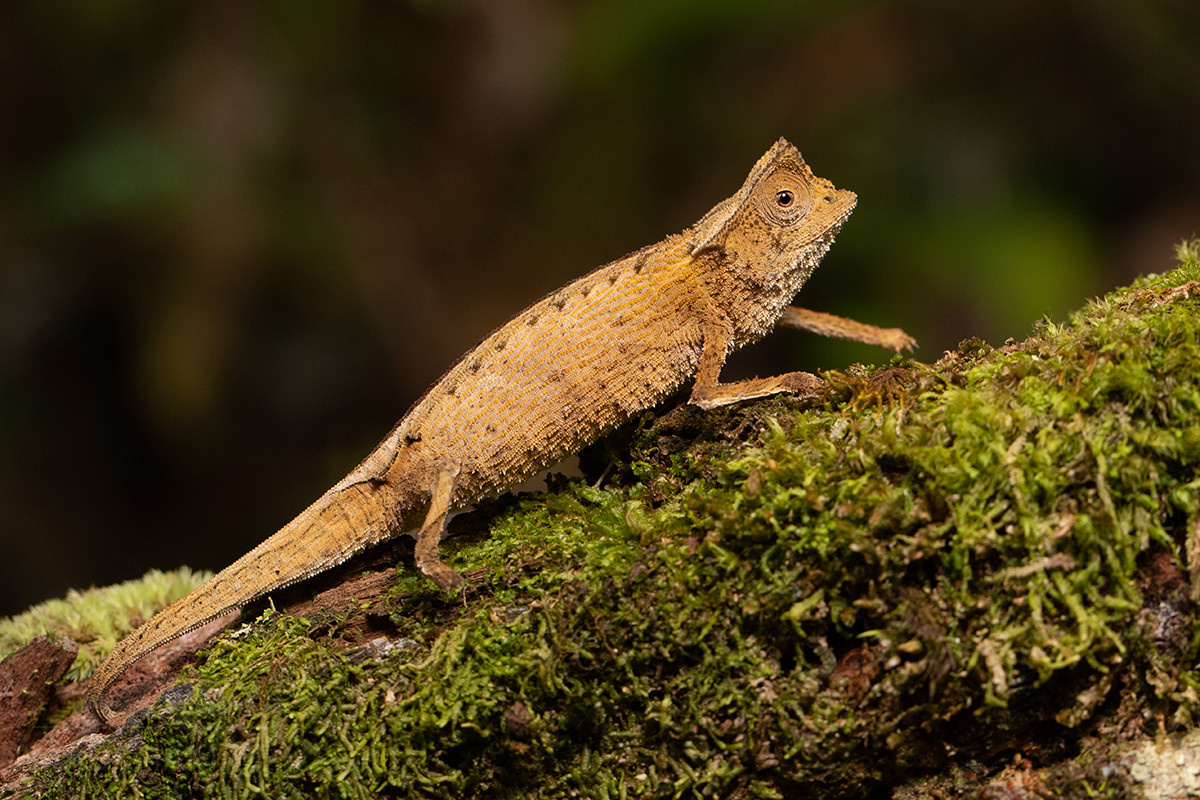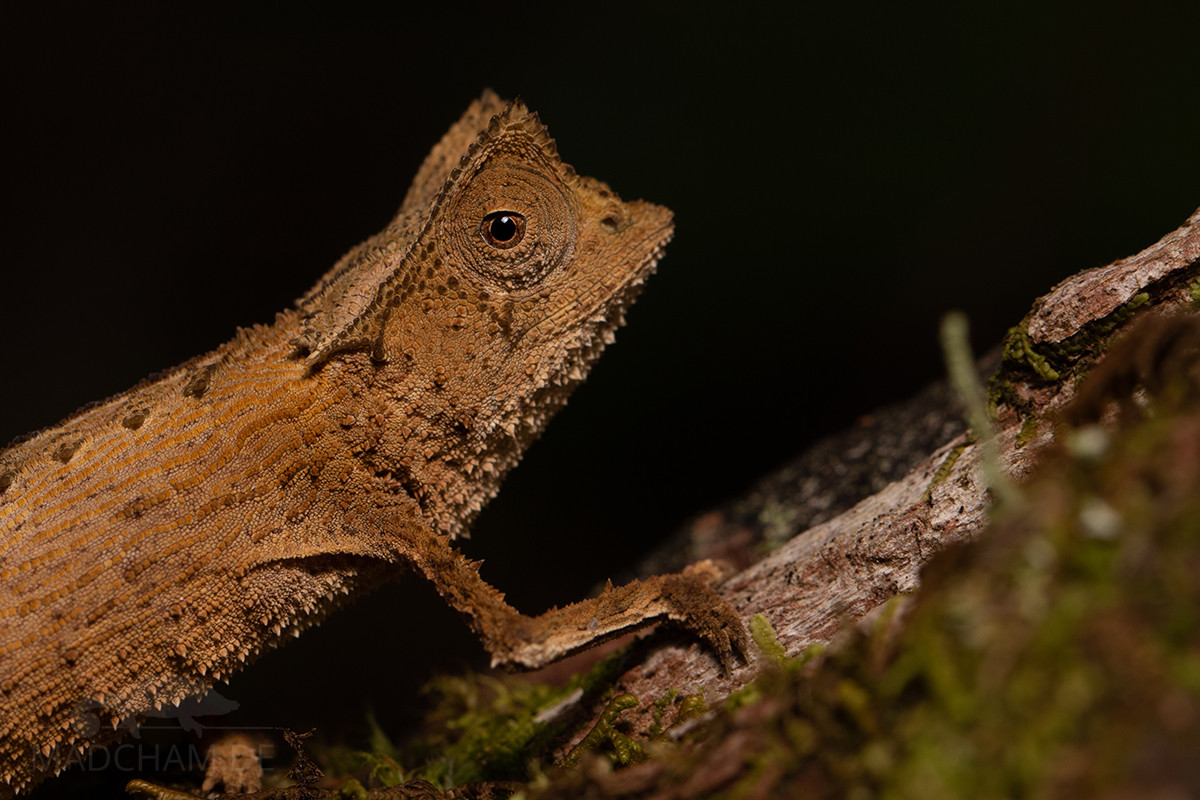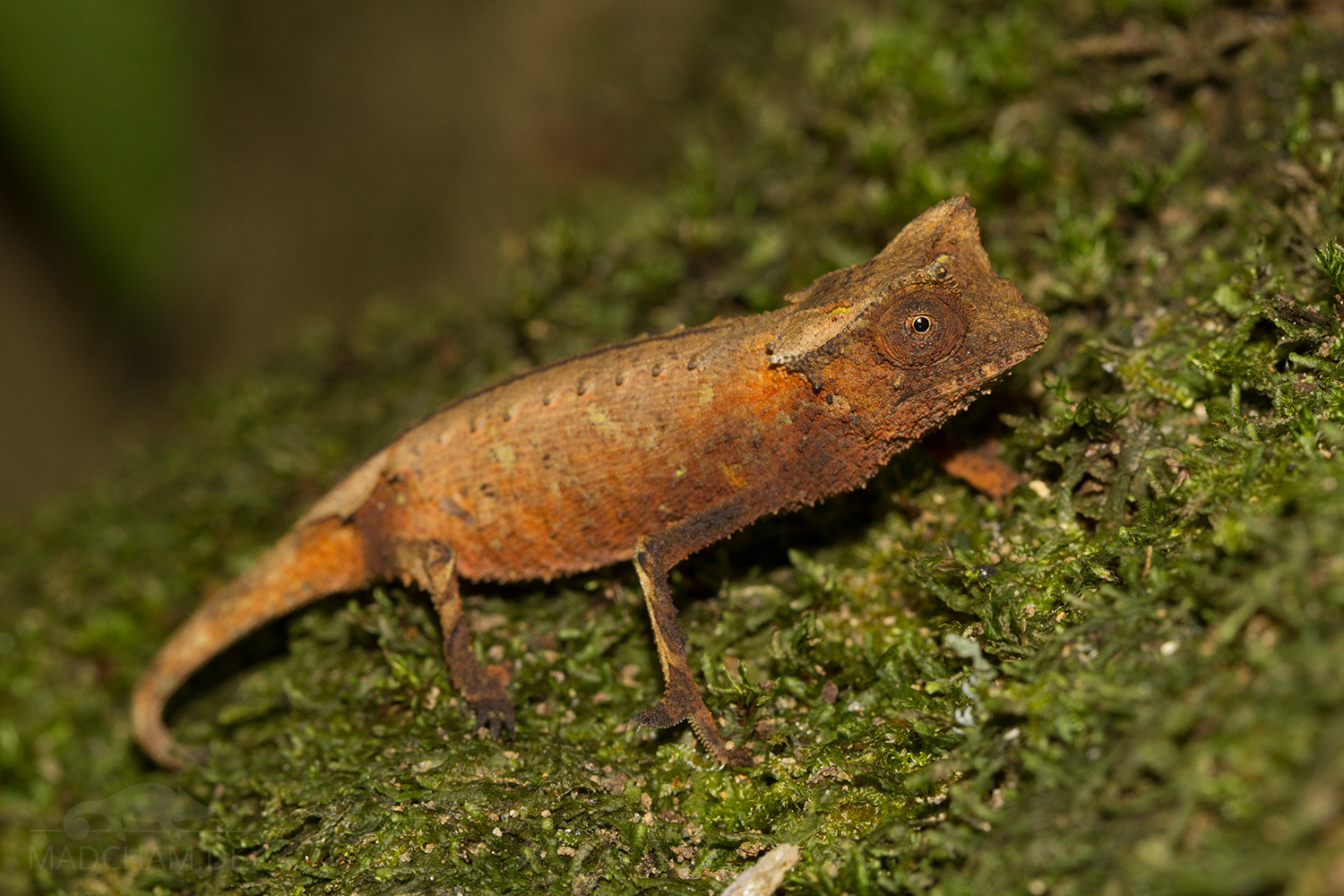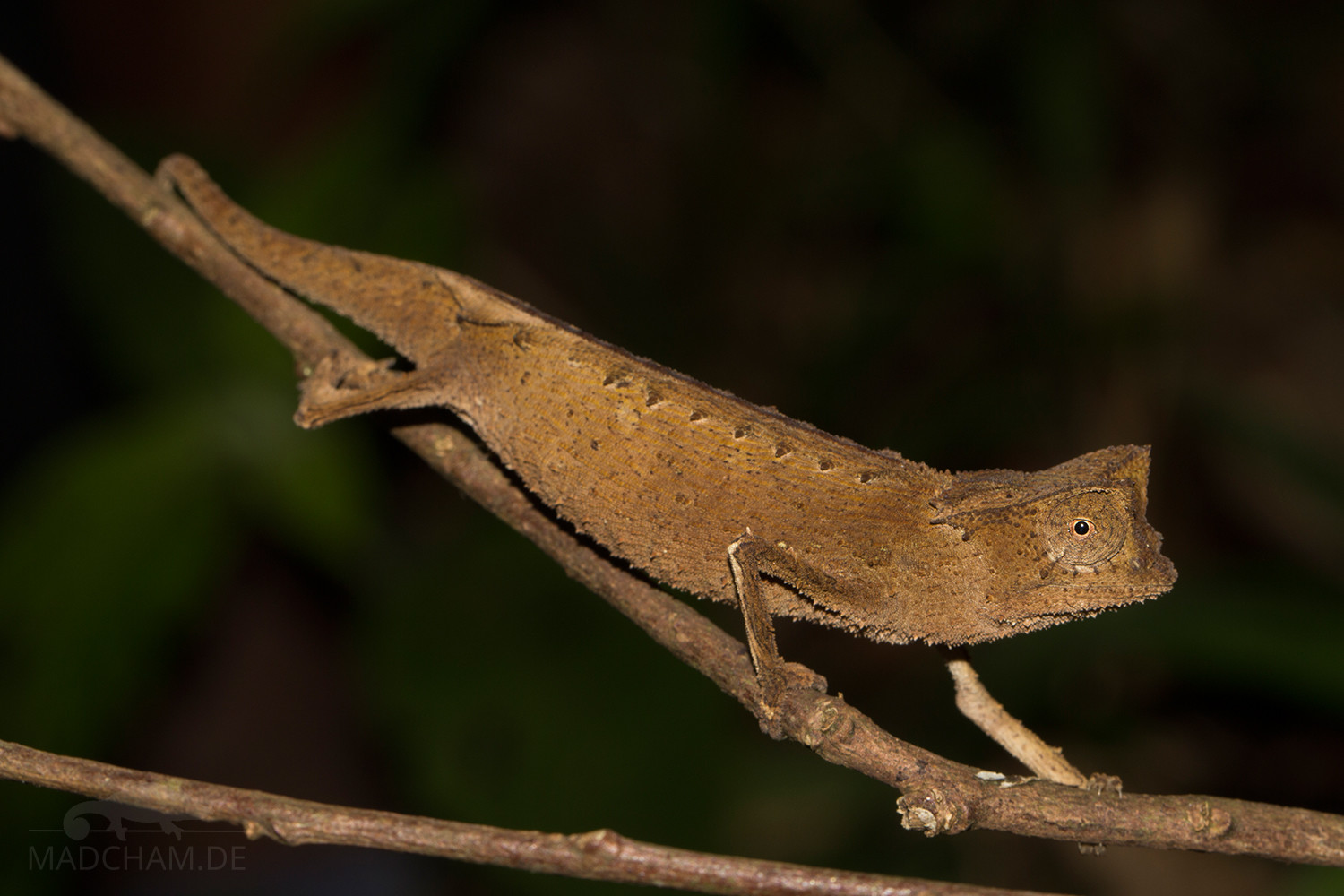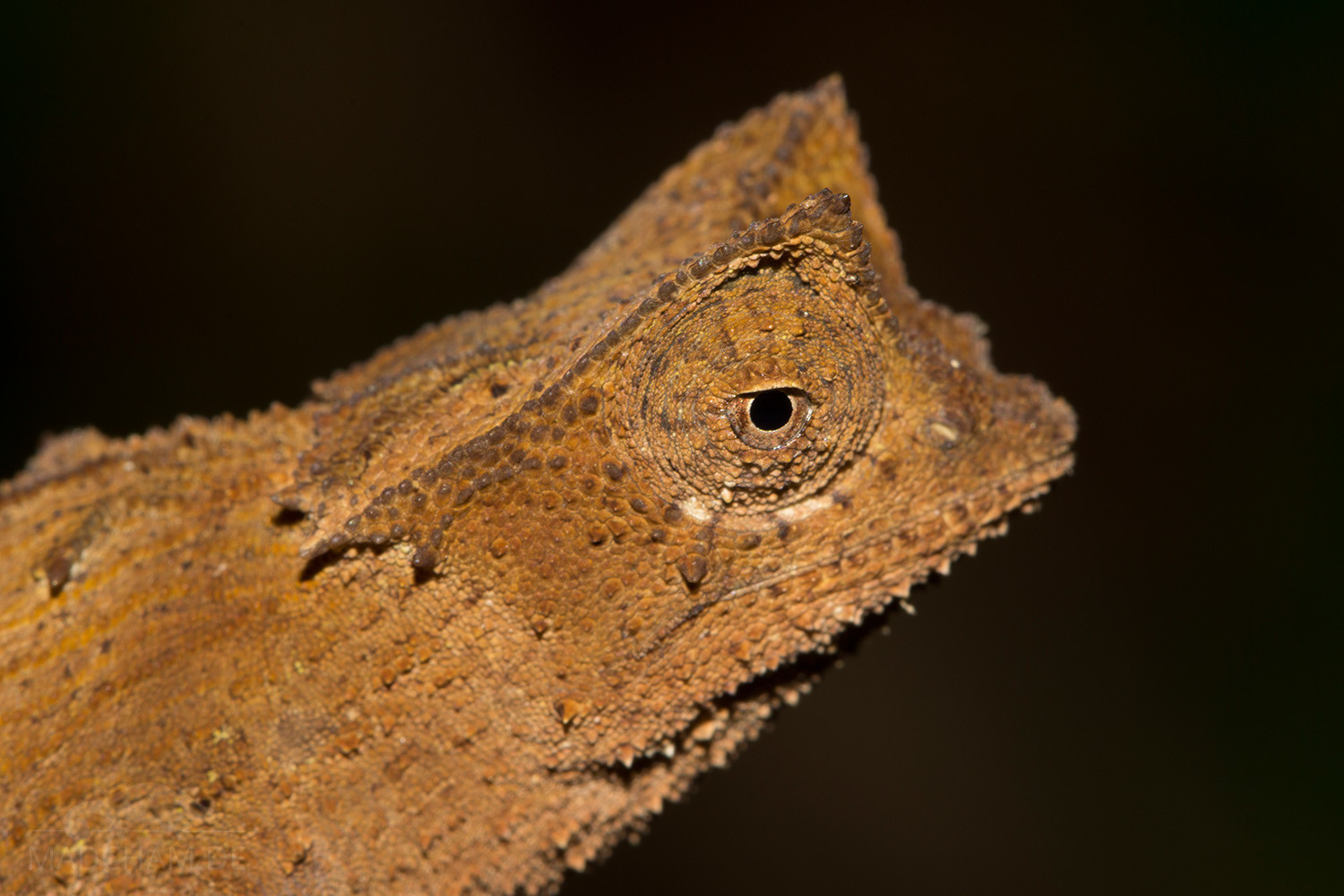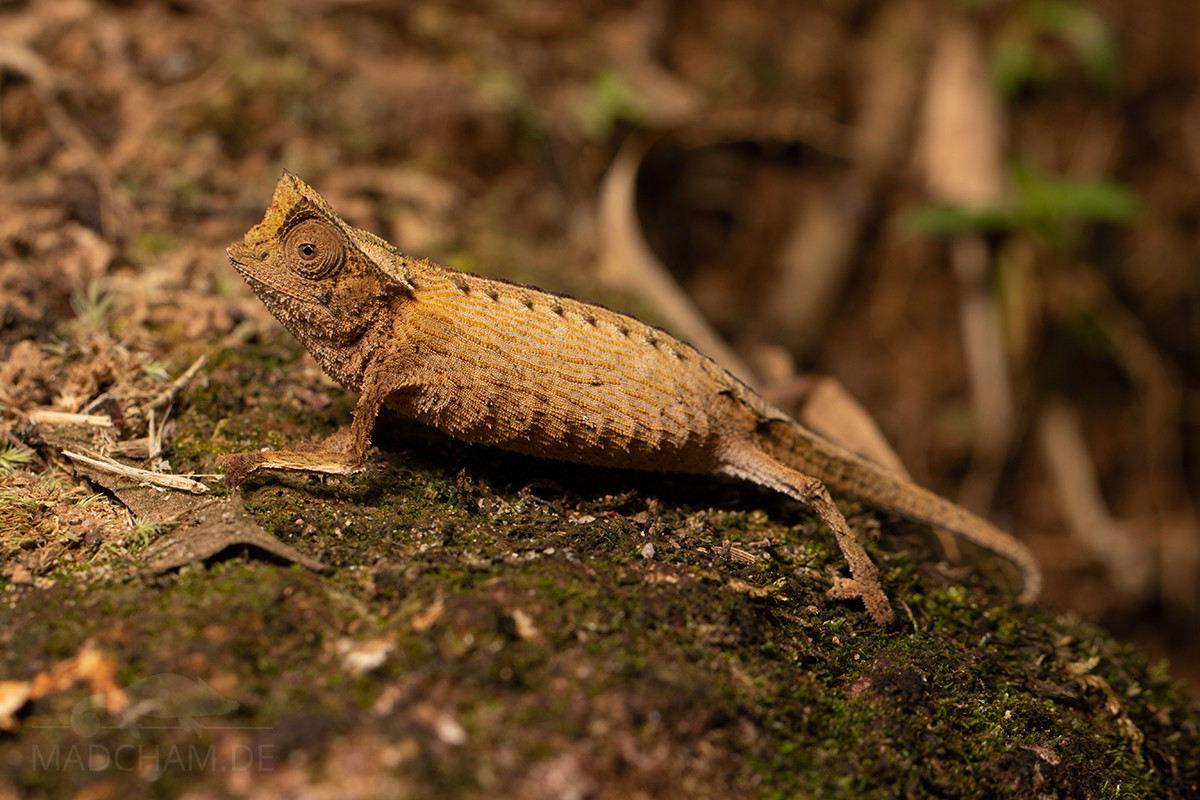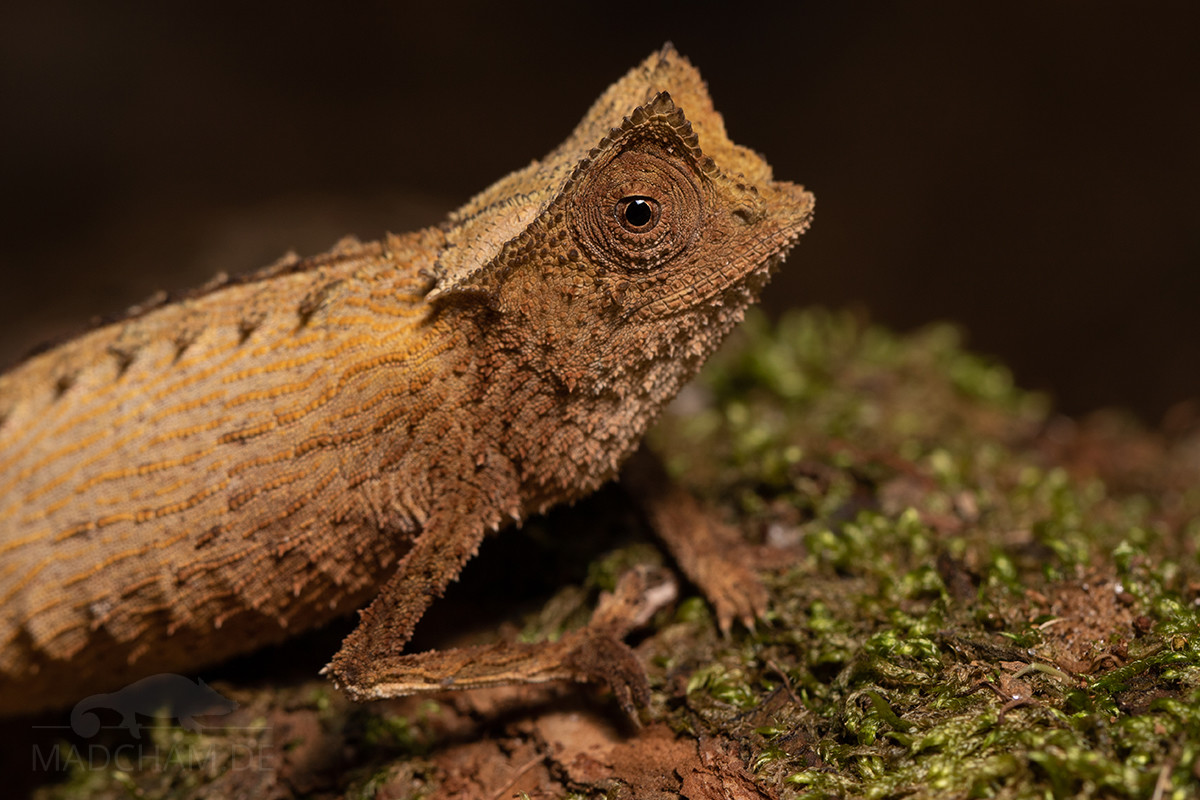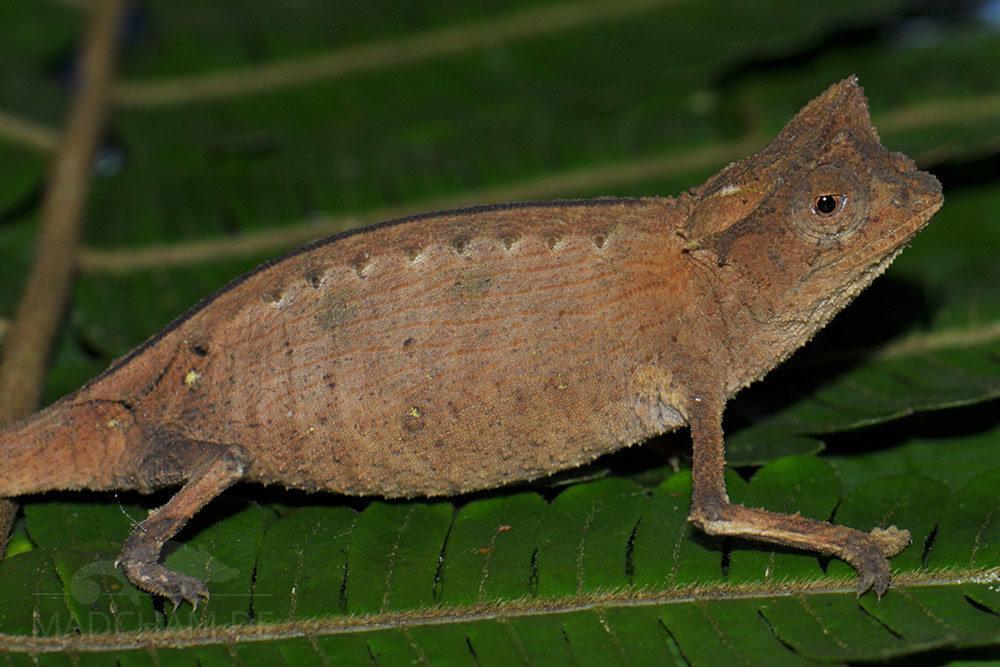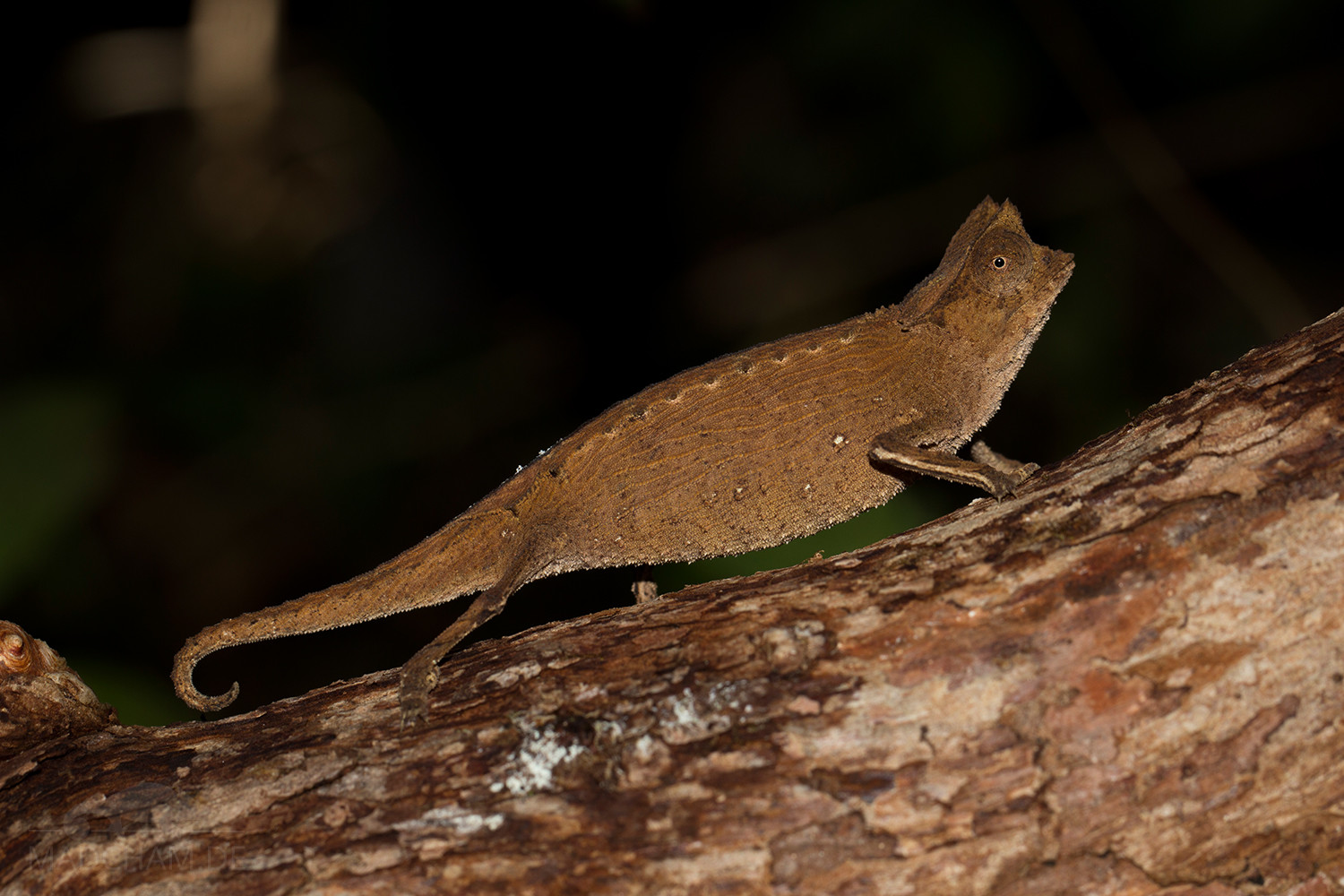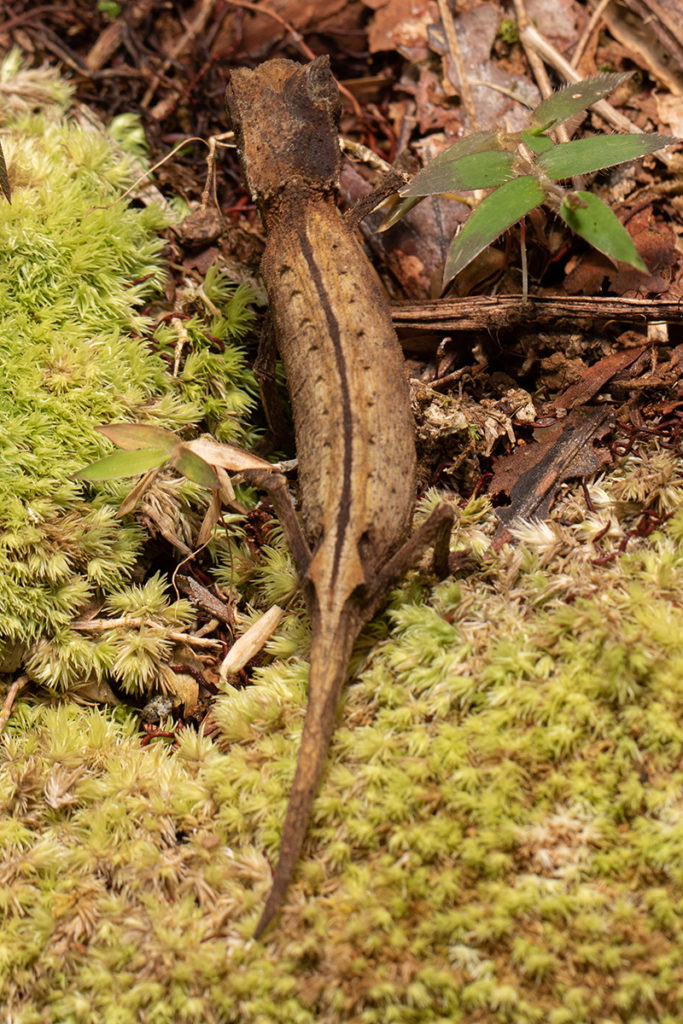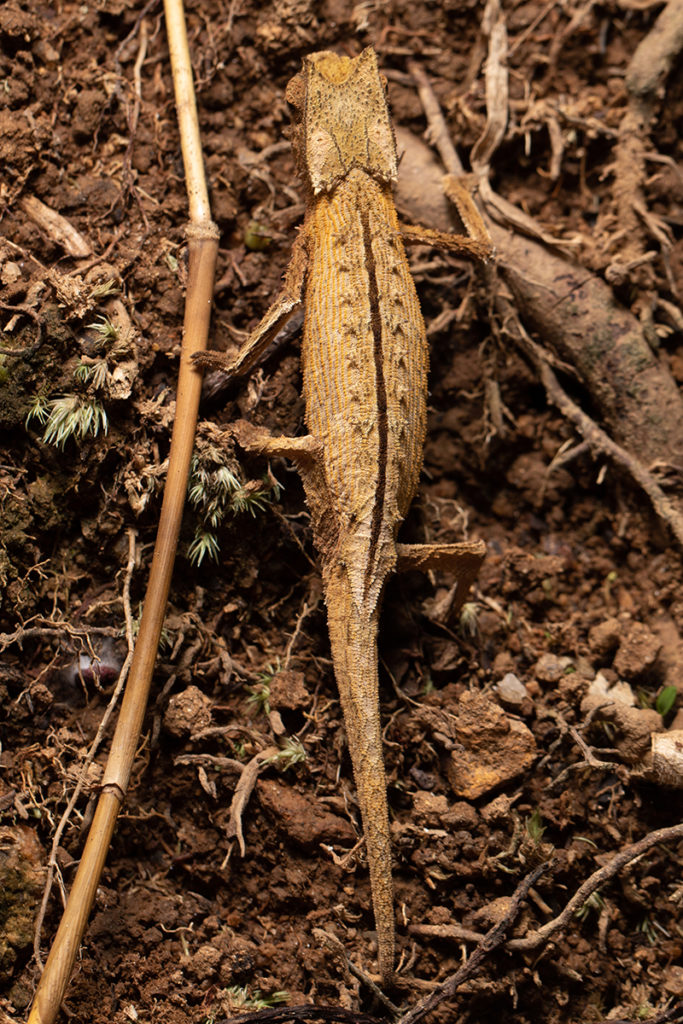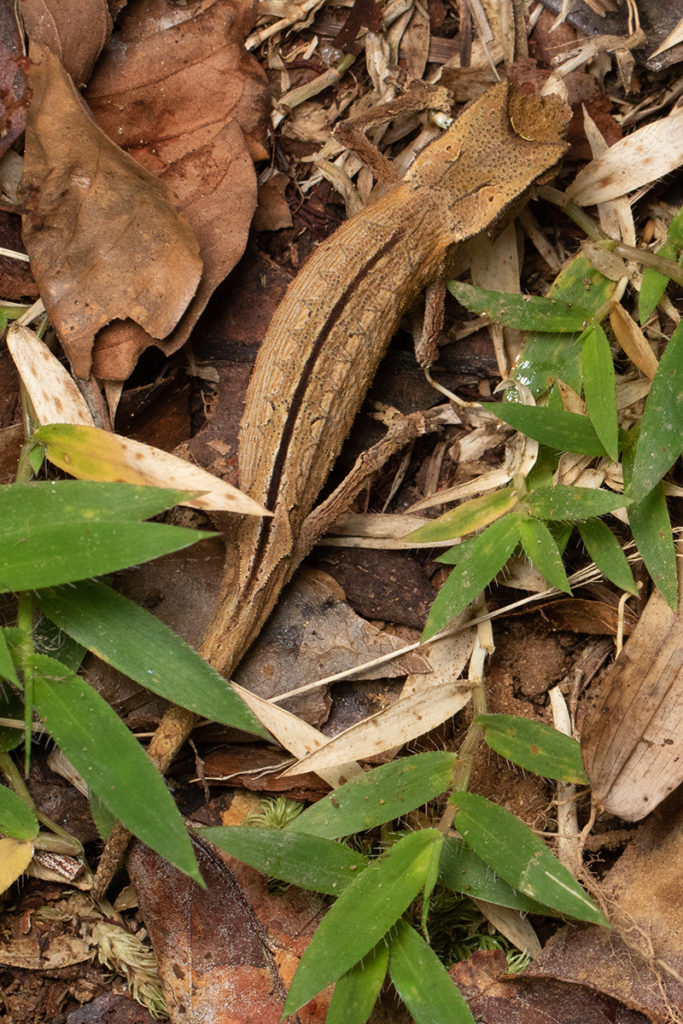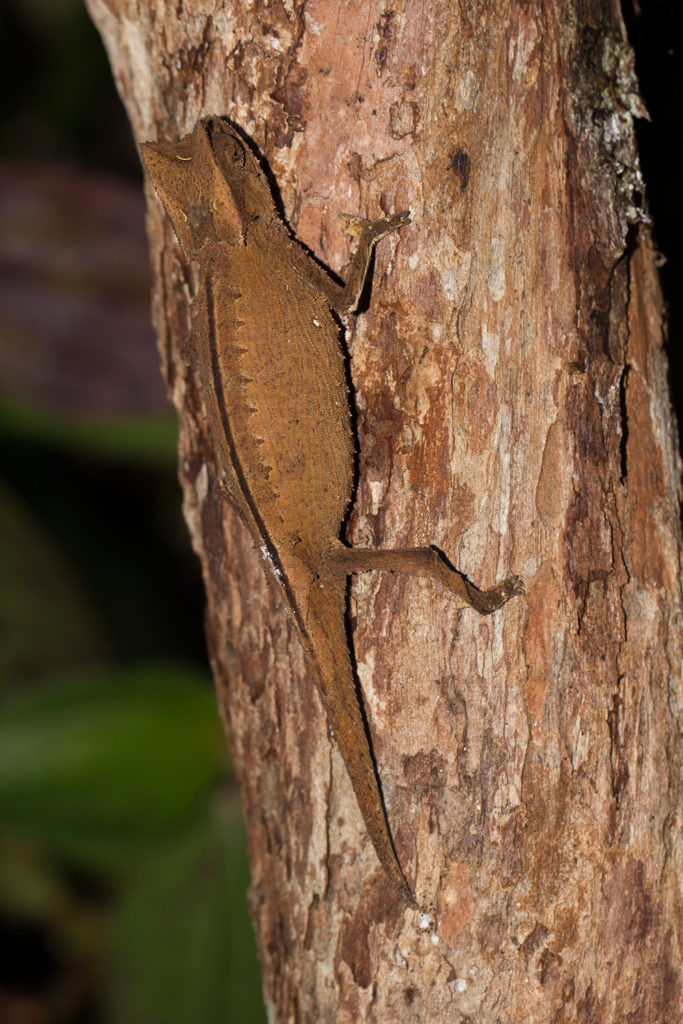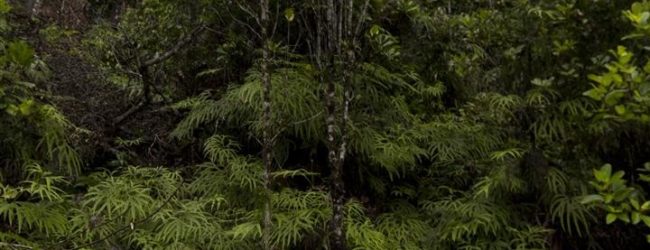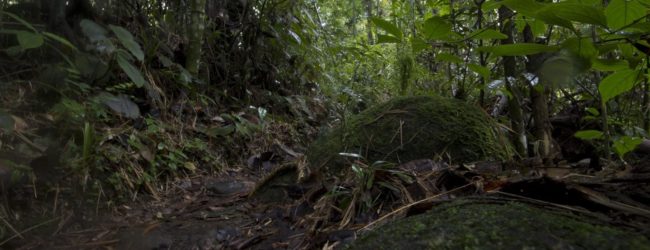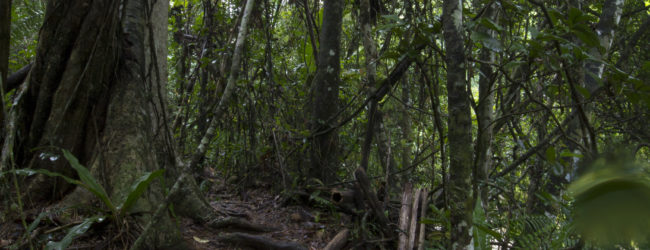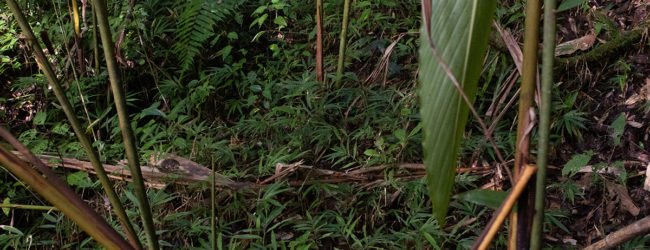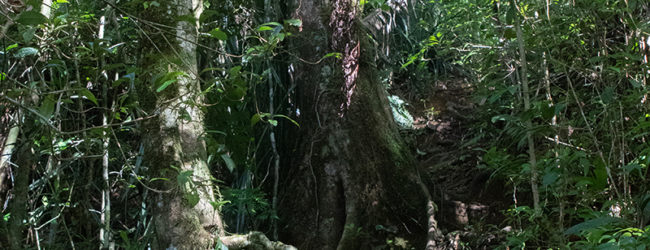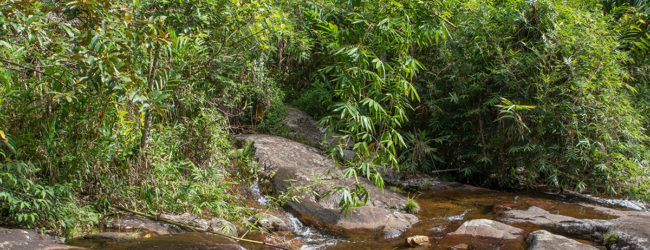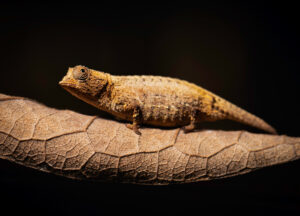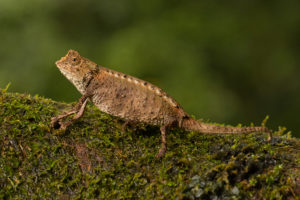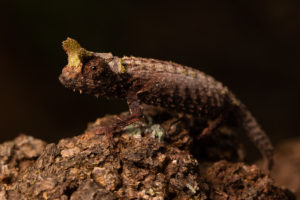2016 for the first time 150 specimens, 300 specimens in 2017, 150 specimens per year in 2018-2024 for legal export
First description: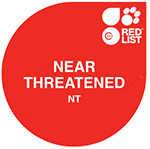
Brygoo, Blanc & Domergue, 1974
Origin of the species name:
Édouard-Raoul Brygoo (later working at the Natural History Museum in Paris, France), Charles Pierre Blanc and Charles Antoine Domergue from the then Institut Pasteur in Antananarivo, Madagascar dedicated the species to their colleague Paul Griveaud. Griveaud was an entomologist and described numerous insect species of Madagascar.
Distribution:
Brookesia griveaudi lives in foliage, shrubs and low branching in Northeast Madagascar. Its distribution area builds a long triangle between Antalaha, Sambava, and Maroantsetra and includes the national parks of Marojejy, Anjanaharibe-Sud, and Masoala. During the daytime, you can find it directly in the foliage or short above.
Appearance & size:
With a maximum total length of 11 cm, this species belongs to the larger leaf chameleons. Laterally along the back, it has 9 to 10 tubercles on each side that are continued on the tail. Brookesia griveaudi has a well developed pelvic shield, that the otherwise quite similar species Brookesia superciliaris does not have. Like the latter, individuals of Brookesia griveaudi have big, pointed bony extensions above the eyes. Brookesia stumpffi, which has a similar well developed pelvic shield, has in contrast to Brookesia griveaudi rounded bony extensions above the eyes. The specimens we found all had brown coloration with a dark stripe along the back, right between the tubercles. But according to literature, this stripe is not always visible in this species.
Table of weights
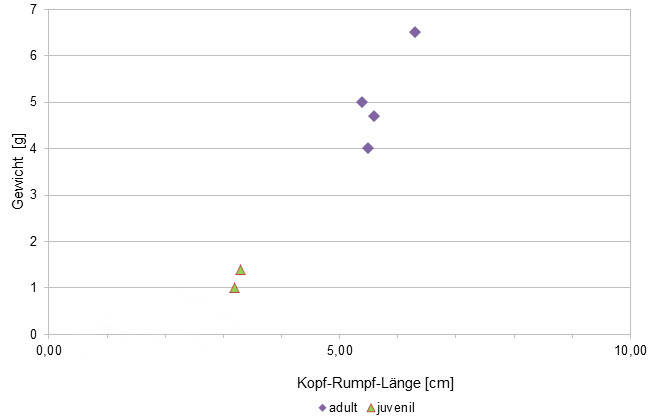
Since 2022 we have been measuring the weights of Brookesia griveaudi found in Madagascar, as far as the animals (and our scales) cooperate. In the long run, average weight in relation to the head-torso length (measured from the tip of the nose to the cloaca) for the species should be obtained from as many measurements as possible. That is, unfortunately, not too much can be gleaned from the current tables yet, but they can be the first guide. It is important to know that all weights were measured towards the end of the rainy season (= best food supply), so they should be maximum weights in Madagascar. Triangular symbols for females mean not pregnant, and spherical symbols mean pregnant.
| Jan | Feb | Mar | Apr | May | Jun | Jul | Aug | Sep | Oct | Nov | Dec | |
| Average temperature | 26 | 26 | 26 | 25 | 25 | 23 | 23 | 22 | 23 | 24 | 25 | 26 |
| Minimum temperature | 24 | 24 | 23 | 23 | 22 | 21 | 20 | 19 | 20 | 21 | 22 | 24 |
| Maximum temperature | 30 | 29 | 29 | 29 | 28 | 27 | 25 | 25 | 25 | 27 | 28 | 30 |
| Rain days | 28 | 23 | 27 | 22 | 24 | 21 | 20 | 18 | 23 | 22 | 16 | 25 |
Marojejy mainly consists of rainforest that extends over the eponymic sacred mountain at elevations of 200 to maximally 2100 m above sea level. In the highest areas, climate is cool and vegetation sparse, but most chameleons live in the warmer dense rainforest below. Marojejy has different altitude levels, each with its own species living in its own climate. In the lowest altitude level it is very warm and humid, in the middle and high altitudes it becomes a little cooler, but not less humid.
In Marojejy, there is few difference between rainy and dry season. Humidity is always very, very high. In the rainy season, precipitation is more intense with rainfalls that may last for days and sometimes are accompagnied by heavy storms. In the dry season, temperatures are a little lower, but it never becomes really cold. And it still rains almost daily. It really cannot become dry in Marojejy during "dry" season. Humidity is the main key factor of this rainforest. In 2022, we measured relative humidity on various days during the rainy season, and the data can be found below.
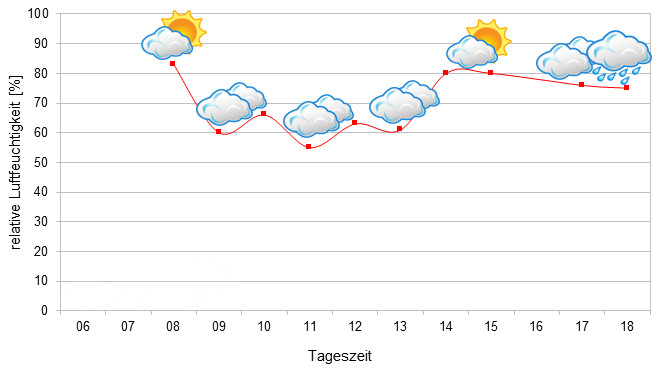
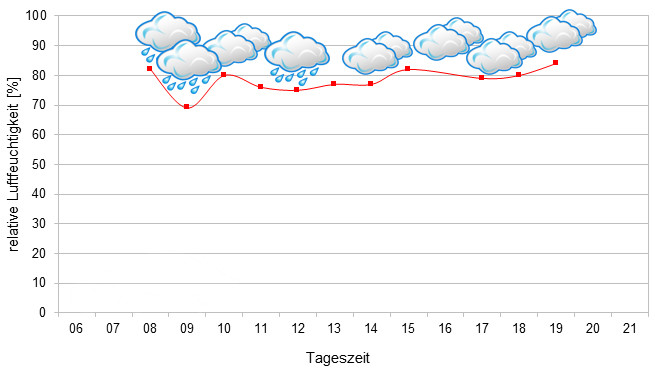
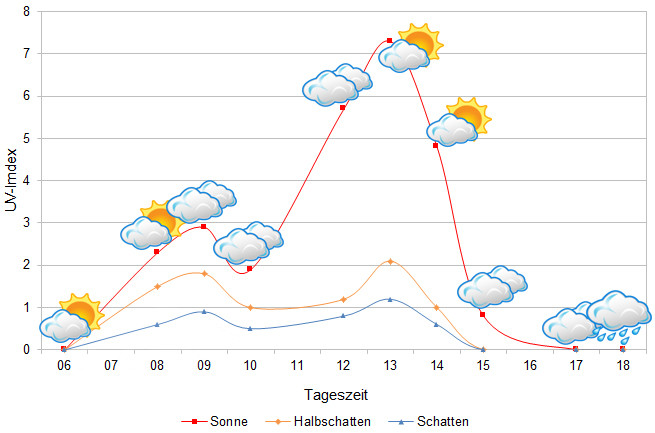
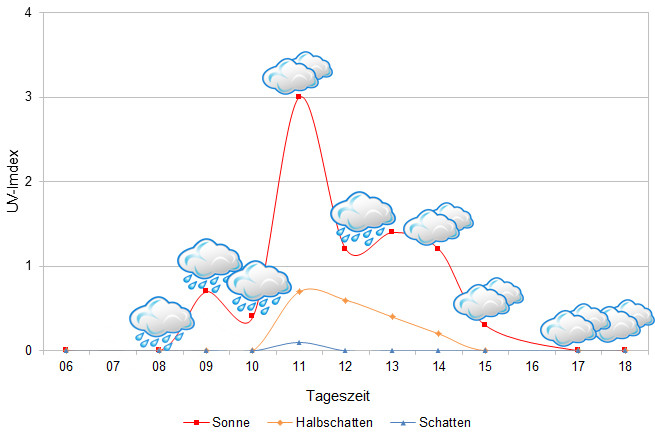
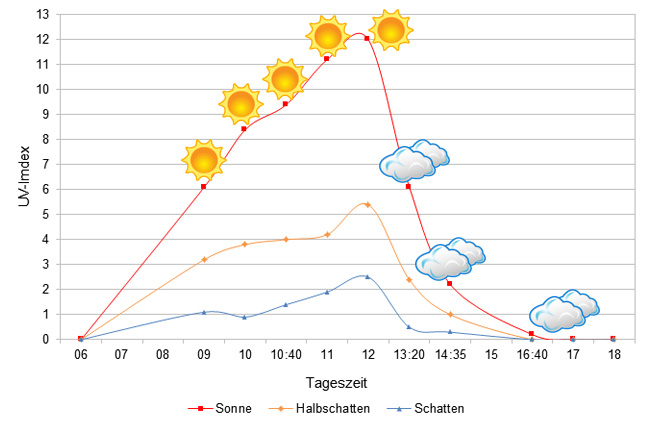
We have measured UVB data with a Solarmeter 6.5 in spring (end of March until beginning of April) at the peak of activity of chameleons in Madagascar. We always measured the values that a chameleon could maximally reach in its habitat.
Since 2022, in addition to other climate data, we have been measuring air pressure at the locations we visit in Madagascar. The following data is from different days during the rainy season. On the X-axis is the time of day or night. In Madagascar, the day begins around 6 a.m., and night falls at 6 p.m. The Y-axis shows the atmospheric pressure in hPa.
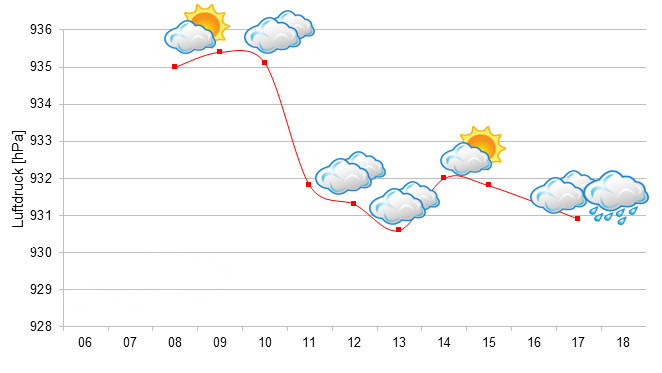
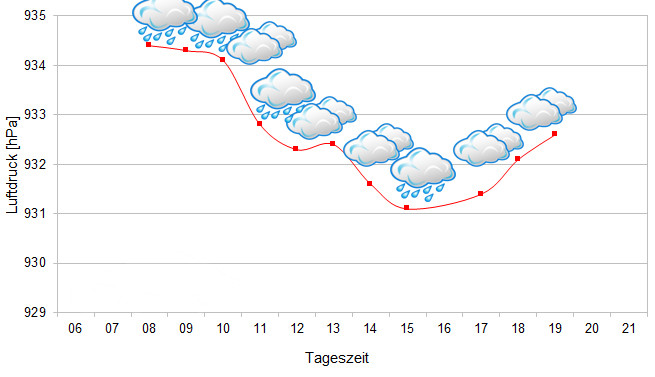
Habitat:
The following pictures show the habitat of Brookesia griveaudi between Camp Mantella and Marojejya in Marojejy. In the upper part between both camps and around Camp Marojejya we have found these animals mostly. The rainforest here consists of huge tree giants and slippery, mossy, round stones in very lush undergrowth. Ferns, lianas, and moss dominate the scene. You can find these chameleons walking on dead wood or climbing on low twigs.
Below you can find some 360° images from Marojejy. With the mouse, you can rotate in all directions. If you click on the Theta logo, the images will open in an enlarged view in a separate window. There is also the possibility to run the pictures in full-screen mode. Have fun watching!
Regenwald im Nationalpark Marojejy, Region Sava, Nordost-Madagaskar, April 2022 – Spherical Image – RICOH THETA
Regenwald im Nationalpark Marojejy, Region Sava, Nordost-Madagaskar, April 2022 – Spherical Image – RICOH THETA
Regenwald im Nationalpark Marojejy, Region Sava, Nordost-Madagaskar, April 2022 – Spherical Image – RICOH THETA

